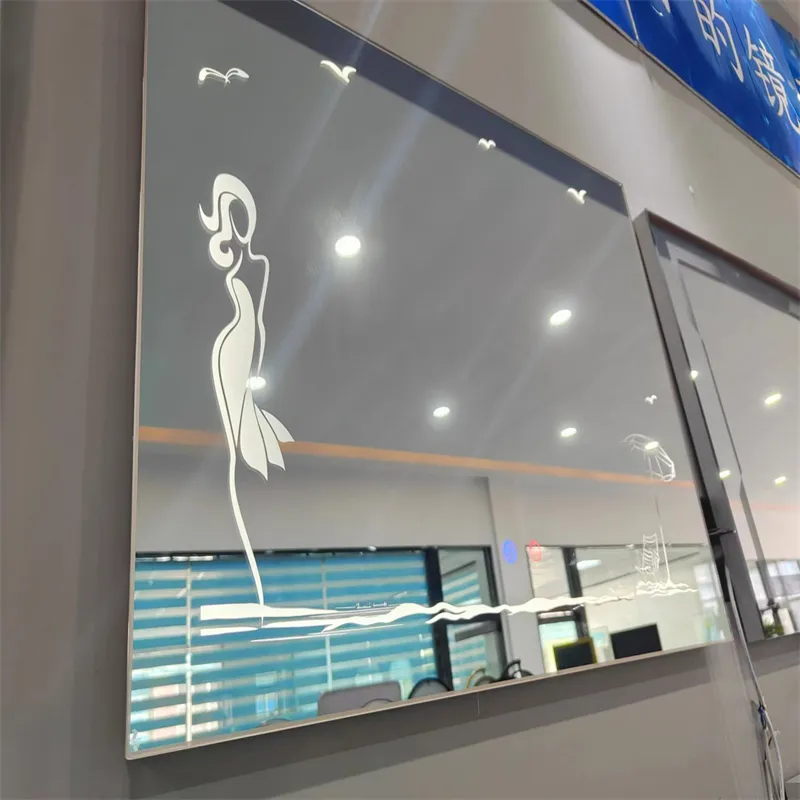Nov . 20, 2024 23:46 Back to list
clear flat glass
Understanding Clear Flat Glass Characteristics, Uses, and Advantages
Clear flat glass is a versatile and essential material that finds application in various industries and everyday products. With its smooth surface and transparency, it serves numerous functional and aesthetic purposes. This article explores the characteristics, uses, and advantages of clear flat glass, shedding light on why it continues to be a preferred choice in modern design and construction.
Characteristics of Clear Flat Glass
Clear flat glass is typically manufactured from silica sand, soda ash, and limestone, which are melted at high temperatures to form a molten glass. Once formed, it is cast into flat sheets through a process called float glass production. This method involves floating the molten glass on a bed of molten tin, allowing it to create an even surface and uniform thickness. The result is a clear, transparent glass sheet boasting several key characteristics
1. Transparency Clear flat glass is known for its excellent light transmission properties, allowing up to 90% of light to pass through while maintaining clarity. This makes it ideal for windows, display cases, and any other applications where visibility is crucial.
2. Smooth Surface The smooth and even surface of clear flat glass makes it easy to clean and maintain. It resists dust and dirt accumulation, ensuring that the glass remains clear and transparent for a long time.
3. Durability Although glass is fragile, clear flat glass is produced to meet specific strength standards. It can withstand various environmental conditions, making it suitable for both indoor and outdoor applications.
4. Versatility Clear flat glass can be cut into various shapes and sizes, adapting to different design requirements. This adaptability enables its use in an array of applications, from architectural features to decorative elements.
Uses of Clear Flat Glass
The applications of clear flat glass are wide-ranging and diverse. Some of the most common uses include
1. Windows and Doors The most apparent use of clear flat glass is in residential and commercial windows and doors. It provides insulation while allowing natural light into spaces, enhancing the ambiance.
2. Mirrors By applying a reflective coating to one side, clear flat glass can be transformed into mirrors, used in homes, bathrooms, and commercial settings for decorative and functional purposes.
clear flat glass

4. Furniture Clear flat glass is frequently used in furniture design, such as coffee tables, shelves, and countertops, lending a modern and sophisticated look to interiors.
5. Partitions In office spaces, clear flat glass can be used for partitioning to create open, airy environments while still providing privacy.
6. Automotive Applications Clear flat glass is also used in automobiles, particularly for windows, facilitating visibility while providing structural integrity.
Advantages of Clear Flat Glass
The advantages of clear flat glass extend beyond its aesthetic appeal. Some noteworthy benefits include
1. Energy Efficiency With advancements in glass technology, such as low-emissivity (Low-E) coatings, clear flat glass can contribute to energy efficiency in buildings by reducing heat transfer.
2. Safety Options Clear flat glass can be tempered or laminated to enhance safety. Tempered glass is more resistant to breakage and shattering, while laminated glass holds together when broken, minimizing the risk of injury.
3. Recyclability Clear flat glass is 100% recyclable, making it an environmentally friendly choice compared to many other building materials. Its recyclability aligns with today's emphasis on sustainability and reducing waste.
4. Aesthetic Flexibility Clear flat glass can complement various aesthetic styles, from minimalist designs to traditional setups, enriching spaces while maintaining a sense of openness.
Conclusion
In summary, clear flat glass is a remarkable material that combines functionality with elegance. Its distinct characteristics, versatility, and numerous applications have made it a staple in architectural design, furnishing, and various industries. As technology continues to evolve, clear flat glass will likely play an even more pivotal role in innovative designs and sustainable building practices, ensuring its relevance for years to come.
-
Safety and Style with Premium Laminated Glass Solutions
NewsJun.24,2025
-
Reinvents Security with Premium Wired Glass
NewsJun.24,2025
-
Premium Float Glass Line for Modern Architecture
NewsJun.24,2025
-
Low Emissivity Glass for Energy-Efficient Architecture
NewsJun.24,2025
-
High-Performance Insulated Glass Solutions for Modern Architecture
NewsJun.24,2025
-
Elevates Interior Style with Premium Silver Mirror
NewsJun.24,2025
Related PRODUCTS














